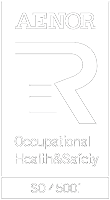In electrical engineering, a conductor (or electrical conductor) is defined as an object or type of material that allows the flow of charge in one or more directions. It is an important component of overhead and underground electrical transmission and distribution systems. The choice of conductor depends on the cost and efficiency. An ideal conductor has the following features.
- It has maximum electrical conductivity.
- It has high tensile strength so that it can withstand mechanical stresses.
- It has the least specific gravity i.e. weight/unit volume.
- It has the least cost without sacrificing other factors.
Tratos has now developed, tested and successfully installed a completely new hybrid design of conductor for use in overhead lines based upon a high load-carrying carbon fibre core with two compact, space-saving, segmental thermal resistant aluminium alloy (AT1) wire layers, helically applied around in accordance with IEC 62004.
The new hybrid conductor replaces completely the use of traditional design conductors, where any increase in transmitted power resulted directly in either an increase in size and hence the weight of the conductor, or an increase in the operating temperature above the recommended maximum operating temperature.
Discover Tratos overhead conductor cables below.
Overhead Conductor Cables
Tratos has now developed, tested, and successfully installed a completely new hybrid design of conductor for use in overhead lines based upon a high load-carrying carbon fiber core with two compact, space-saving, segmental thermal resistant aluminum alloy (AT1) wire layers, helically applied around in accordance with IEC 62004.











